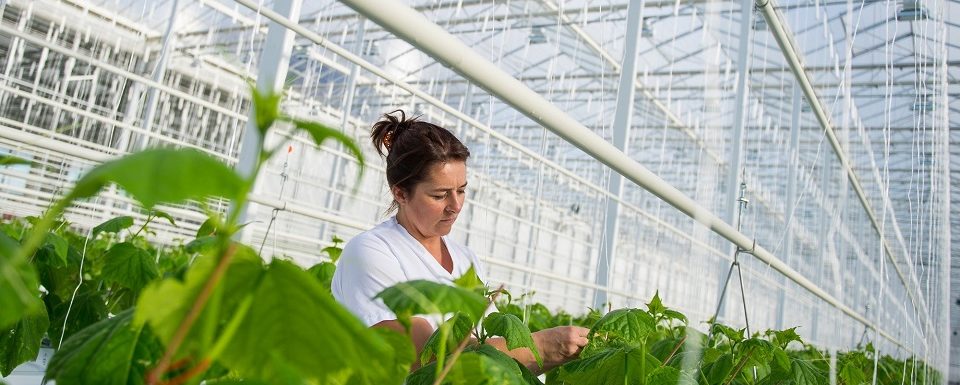Resolute Forest Products – Vegetable Greenhouse using Waste Heat & Carbon

Projects Sponsor
Resolute Forest Products – Vegetable Greenhouse using Waste Heat & Carbon
Turning waste heat and carbon into 45 million cucumbers
The Toundra Greenhouse project is a story of economic development meets carbon footprint reduction. It’s the kind of story, the blueprint for a successful future — that happens, but can all too easily fly under the radar.
As one element of their commitment to reducing GHG emissions, the management of Resolute Forest Products wanted to make a bold statement to its employees, business partners and the market that the company takes its responsibility to prevent climate change seriously. In 2014, the company announced that it had teamed up with local investors in the Lac-Saint-Jean region of Quebec to build Toundra Greenhouse, a 35-hectare greenhouse complex on land adjacent to the Saint-Félicien pulp mill but the story does not start there.
In 1989, the town of Saint-Félicien faced a problem of what to do with the wood waste from local sawmills that threatened to pollute the water table and impact drinking water quality. The town decided to burn the wood in a new thermal power plant to generate electricity; a cogeneration plant was completed in 1996. To use the energy produced, diversify the local economy and create jobs, a project to build greenhouses and grow vegetables was envisaged. In 2006, the town purchased land near the power plant and installed water mains to provide water for the greenhouses.
In 2009, the Québec government granted the town nearly $5 million to build infrastructure and negotiate long-term agreements with developers. There are over 50 local and regional investors involved in the greenhouse project which, as well as the millions in received in funding from the provincial government, has benefitted from government support of CO2 Solutions technology development.
CO2 Solutions, an innovator in the field of enzyme-enabled carbon capture, has been actively working to develop and commercialize the technology for stationary sources of carbon pollution. CO2 Solutions and Toundra Greenhouse worked together to build a CO2 capture unit to collect up to 30 metric tons of CO2 per day from the mill for controlled injection into the greenhouses, which enhances photosynthesis.
Resolute, which holds a 49% interest in the venture, donated a 45-hectare property adjacent to its commercial pulp mill on which to build the greenhouse and has committed to supplying enough hot water from the mill to cover 25% of the project’s heating requirements. The project has been managed by Yves Laflamme, Senior Vice President, Wood Products, Procurement and Information Technology at Resolute.
Construction of the first phase, 8.5 hectares, began in May 2014 when the site was cleared and 3,000 piles were installed for the foundations. The service building and lagoon for recovering rainwater and snowmelt were built in 2015, and construction of the greenhouse began in April 2016.
On November 1, 2016, The first cucumber plants arrived and 19 days later, the first cucumbers were harvested in time for the December 2016 inauguration. A preliminary market study showed that only 5% of the cucumbers eaten in Québec were grown in the province, which lead to the decision to grow cucumbers. Indeed, 95% of the Toundra Greenhouse produce is already being sold through long-term contracts with Sobey’s and Subway and more than 100 jobs have been created. It’s projected that upon completion — ultimately, the C$100 million, four-phase project will cover 4 million square feet (35 hectares) — more than 500 jobs will have been created, bringing huge social and economic benefits to the region. As well as 45 Million cucumbers!
The ultimate goal of Toundra Greenhouse is to make Quebec a self-sufficient producer of the vegetables it consumes, thereby reducing imports from outside the province. The facility also uses waste heat and CO2 from Resolute’s Saint-Félicien pulp mill, which reduces the mill’s carbon emissions. The complex recovers the equivalent of 11,000 metric tons of CO2 annually, which is like having 2,300 fewer vehicles on the road every year, plus all those vehicles not bringing in all those cucumbers.













